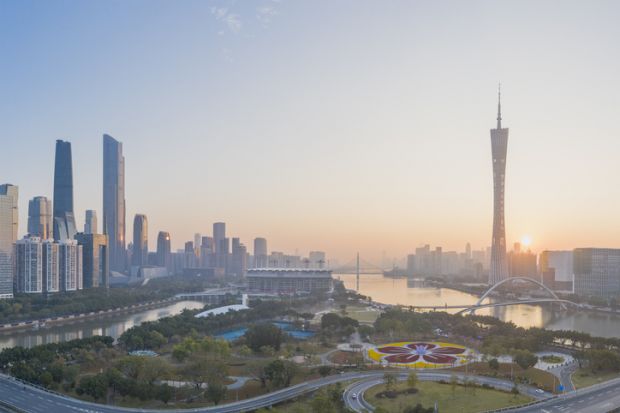A leading Hong Kong-based university is set to welcome its first cohort of postgraduate students to its new Guangzhou campus, marking a major step forward in China’s plan to transform the area into a hub for higher education institutions.
About 3,000 students will study 15 majors across advanced materials, artificial intelligence, life sciences and biomedical engineering, and fintech at the new site run by the Hong Kong University of Science and Technology (HKUST).
It is the first Hong Kong-mainland China joint institution and follows a government-led plan to develop the “Greater Bay Area” that encompasses Guangdong, Hong Kong and Macao.
The campus will start undergraduate recruitment next year, with students from four mainland provinces – Guangdong, Henan, Shandong, and Sichuan – initially studying three subjects: AI, data science and big data technology, and intelligent manufacturing.
Rather than being organised by faculty or department, the campus has adopted a “hub-and-thrust structure”, where all majors fall into four “hubs”: function, information, systems and society.
“Students of the two campuses can enjoy a wider array of courses, as they are able to take each other’s classes. Resources will also be maximised as both campuses share laboratories and central research facilities,” a HKUST spokesperson told Times Higher Education.
Several Hong Kong institutions have already signalled their intention to start expanding into the area, including City University of Hong Kong, Hong Kong Polytechnic University and Hong Kong Metropolitan University.
However, the plan for the area also includes the construction of several new universities with a science and technology focus.
Construction of Great Bay University, located in Dongguan and with aspirations to become “the MIT of the Greater Bay Area”, is under way. It is expected to be completed next year and aims to admit 10,000 students by 2030.
Shenzhen has a five-year plan for educational development that would see the city build at least five new institutions by 2025, specialising in creative design, marine science and science and technology.
The city, the fourth most populous in China, previously faced criticism for not developing its higher education offering sufficiently to “match its social and economic development”. In 2020, it was home to just 12 higher education institutions, far behind other cities such as Beijing (with 91) and Shanghai (64).
But Xiong Hui, professor and dean of the AI+ Lab at HKUST in Guangzhou, told media at a recent event that GBA will follow a different path. While Shenzhen grew rapidly because of market needs, GBA needs to be driven by innovation and technology, he said.
Local authorities have tried various policies to attract more technology specialists to the area, including launching a “Guangzhou Green Card” to make it easier for highly skilled people to relocate. Reports said that the local human resource bureau had helped HKUST attract 137 high-profile recruits to its new campus.







